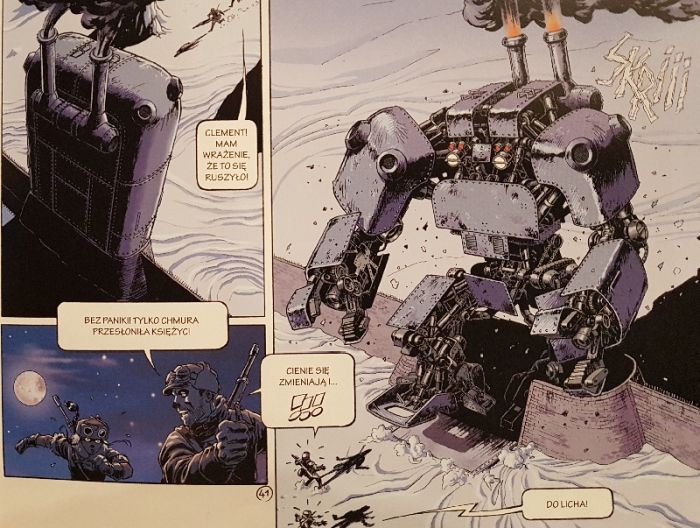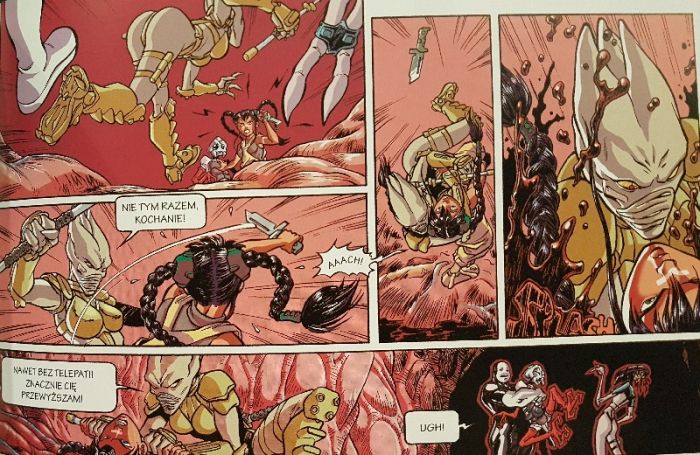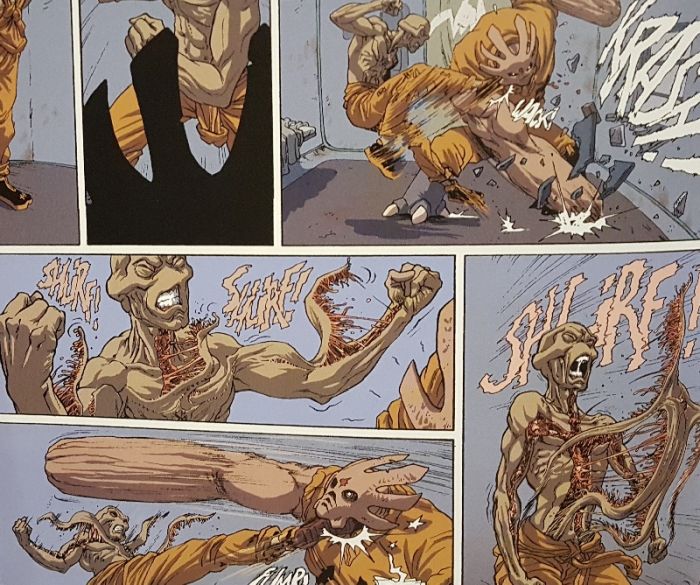When Egmont first published Armada in 2000, still in notebook form, it was fresh. The first volume of Morvan and Buchet’s work was written only two years earlier and only had two sequels. I once read the first few parts and from what I remember, I liked it. It is possible that nostalgia speaks for me, as it was the first “mature” Francophone I read (previously only Asteriks and others). As I write these words, a comic whose original title is Sillage, already has volumes twenty-one of the main series and several spin-offs in France. It is not surprising that with such popularity (and the fertility of the creators), Egmont decided to release a new release. I understand such re-releases. While the hardcover takes up more shelf space, the ability to read four parts at once is appreciated. Although I will warn you right away that apart from collecting the whole thing (in this volume five, the title of which is written with imaginary pictograms – perfect for searching!), The new edition has not been enriched with anything – there are no sketches of characters here. Pity.

In space, no one can read your thoughts
Science fiction has accustomed the audience to the scheme of a lonely alien hiding from people (or wanting to devour them – it depends who likes what). This path was reversed in Armada , and here the main character, Navis, is the only representative of the human species among billions of aliens. The heroine is also distinguished by another unique feature – while all races of extraterrestrials can read thoughts, in the case of homo sapiens this is impossible. Unique skills make Navis a special agent, and individual missions are to bring her closer to meeting other Earthlings.

And where is the Armada?
Paradoxically, Armada has very little of the eponymous fleet of ships traveling through space. Eight notebooks provide only a rudimentary picture of the political and social situation with the senate (?) And the chairman (strongly inspired by the trilogy of Star Wars prequels). In addition, the mafia trading planets is mentioned and the life of the social lowlands is presented in two volumes. And that’s it. It might as well have been a space station instead of a flotilla. This lack of ideas on how to properly explore the initial concept is also visible in the construction of the volumes. Only a fraction of the action takes place in outer space, the rest on subsequent planets. However, it is worth praising Morvan here, because the plot in individual notebooks can take a very surprising direction. A fantasy about rival tribes, a story that takes place during the revolution (industrial and proletarian), or the story of a constant struggle between living organisms and machines, based on the First World War. The decorations are therefore quite interesting here, you can read it all quickly and with pleasure, but usually the point of individual notebooks escapes into cliche. The screenwriter is supposed to deal with weighty topics such as slavery, eugenics or terrorism, but he has nothing to say about them. He is much better at stories simply focused on action, such as a great episode that takes place in a prison.
At the same time, I had the impression that a whole additional series would fit between the volumes, because so many threads are omitted here. Barely Navis is a savage, and soon she is entrusted with special missions of the highest rank. Of course, it would be boring to delve into the origin story too much , but without it, it’s hard to feel any greater bond with the side characters – the heroine says how much they mean to her, but the reader had nowhere to notice it. This story asked for more of the elements known from the “fish out of water” trope.

Fanservice never changes
The graphic layer created by Philippe Buchet pleases the eye. The artist creates frames full of details in a pleasant cartoon style. You can see that he enjoys drawing a science fiction title. Not all of his ideas for aliens are equally interesting, but the less humanoid ones are great for him. Vivid and warm colors are also commendable.
There is quite a lot of nudity here, which is purely decorative. It’s hard to say what age Navis is, sometimes she is called “baby”, but her “wild” nature often manifests itself in walking topless. Some doubts are also raised by the fashion tastes of aliens (who, of course, mostly have hips, waistline and bust – even if they are reptilian) with their particular fondness for thongs. This garment is passé even today , but apparently in the distant future, fashion will return.
To the goal
Armada is an example of a comic book that is pleasant to read when you switch off your thinking. Because as a stockist, it’s a pretty good title. Worse, when you start to analyze it, shortcomings emerge. So it all depends on the mood and expectations of the recipient.


